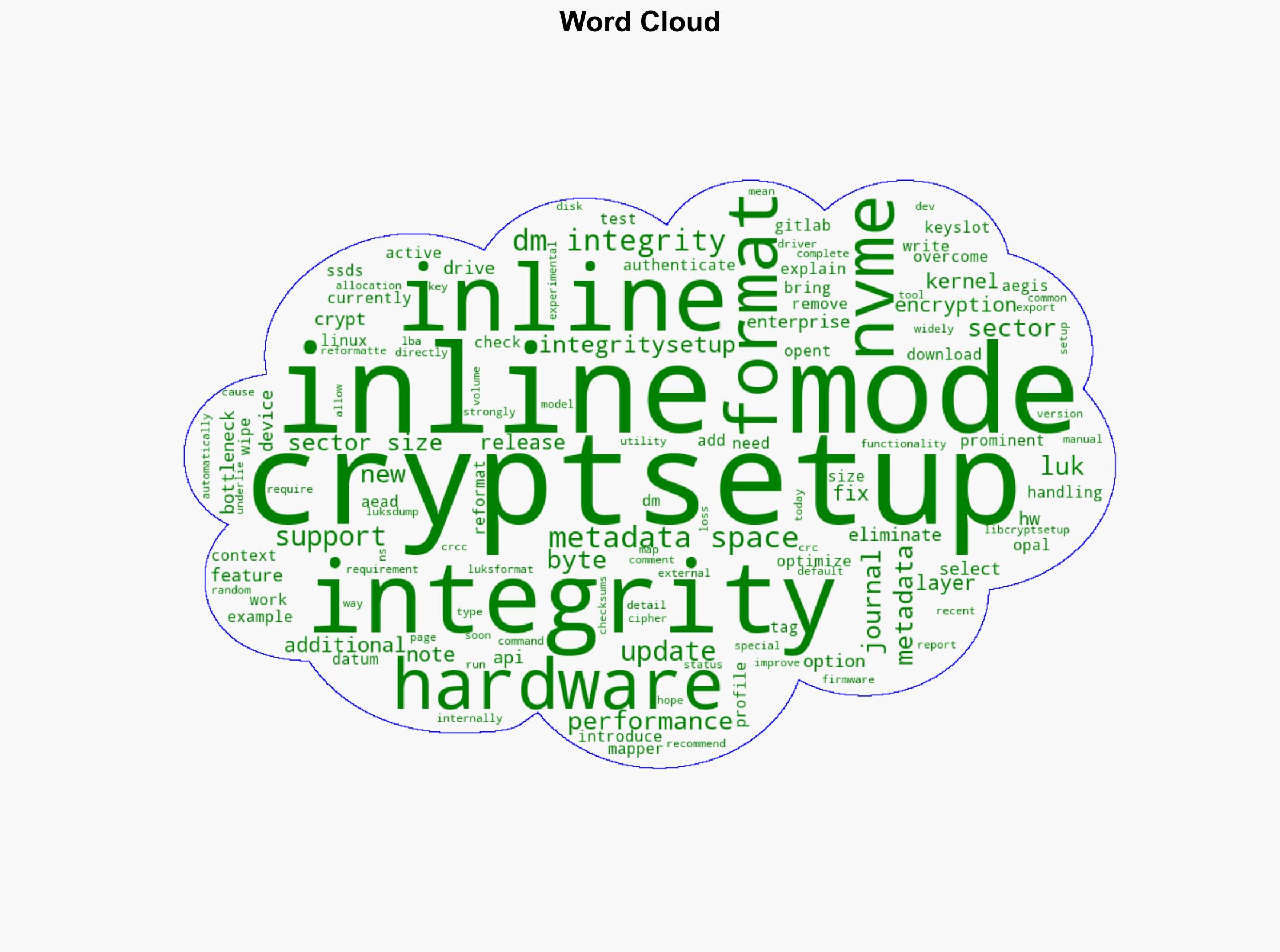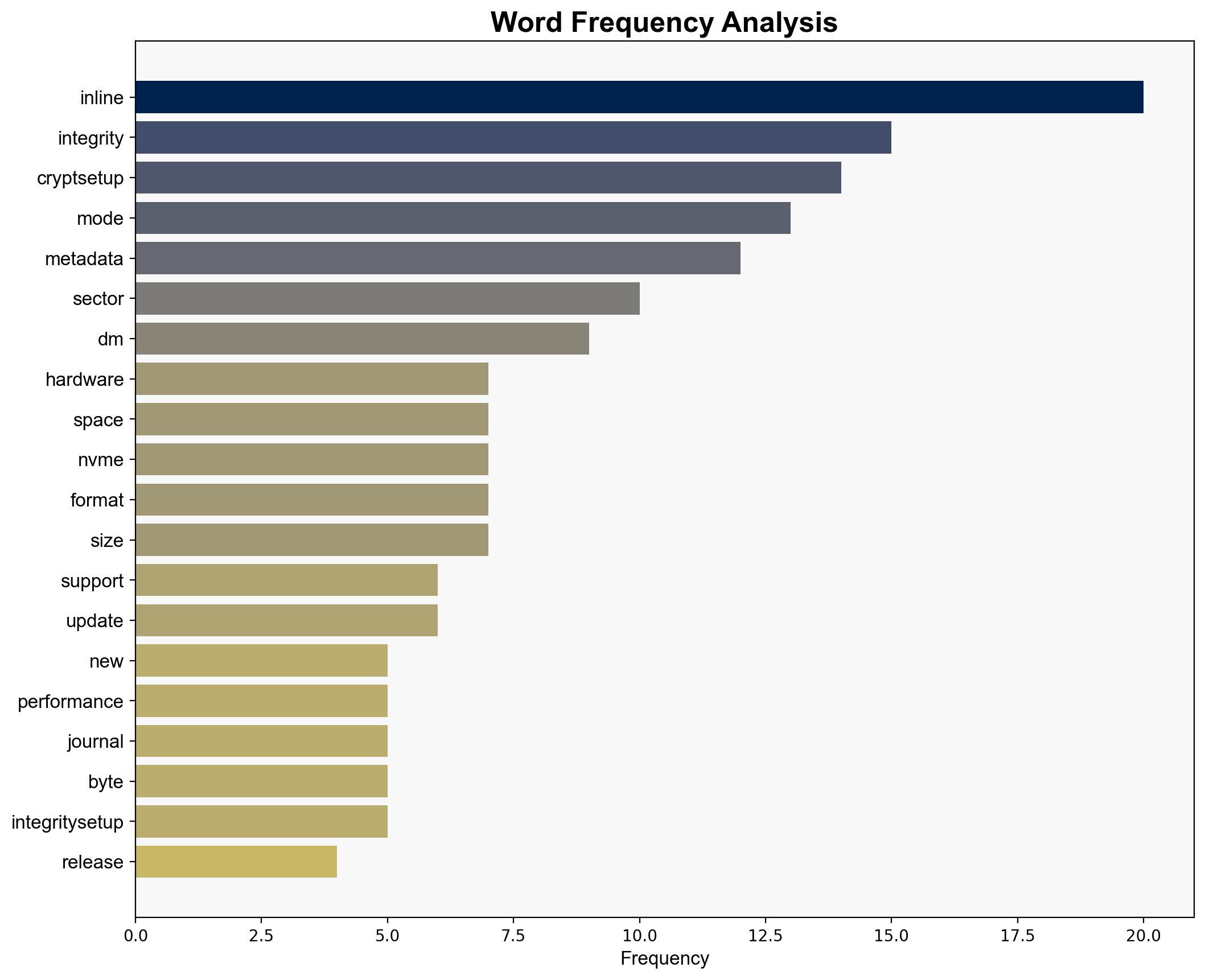Cryptsetup 28 Released With Support For Inline Hardware Metadata Space – Phoronix
Published on: 2025-06-24
Intelligence Report: Cryptsetup 28 Released With Support For Inline Hardware Metadata Space – Phoronix
1. BLUF (Bottom Line Up Front)
The release of Cryptsetup 28 introduces a significant enhancement in disk encryption for Linux systems by supporting inline hardware metadata space. This update is particularly beneficial for enterprise NVMe SSDs, addressing performance bottlenecks associated with the dm-integrity journal. The strategic implication is a potential increase in encryption efficiency and security for systems utilizing these drives. It is recommended that organizations assess compatibility and consider integrating this update to enhance data protection measures.
2. Detailed Analysis
The following structured analytic techniques have been applied to ensure methodological consistency:
Adversarial Threat Simulation
By simulating potential cyber adversaries’ actions, it is possible to identify vulnerabilities in systems using outdated encryption methods and develop strategies to bolster defenses.
Indicators Development
Monitoring for anomalies in system behavior post-update can provide early detection of potential threats exploiting the new inline mode.
Bayesian Scenario Modeling
Using probabilistic inference, the likelihood of successful cyberattacks exploiting this new feature can be quantified, aiding in the development of robust security protocols.
3. Implications and Strategic Risks
The integration of inline hardware metadata space in Cryptsetup 28 could lead to enhanced encryption performance, reducing reliance on the dm-integrity layer. However, the transition phase may expose systems to vulnerabilities if not managed correctly. There is a risk of data loss during reformatting processes, necessitating careful planning and execution. Organizations must also consider the compatibility of existing hardware with this new feature to avoid potential disruptions.
4. Recommendations and Outlook
- Conduct a thorough assessment of current hardware compatibility with the new Cryptsetup feature before implementation.
- Develop a phased integration plan to minimize potential disruptions and data loss risks.
- Enhance monitoring systems to detect any anomalies during and after the transition to the new encryption method.
- Scenario-based projections suggest that in the best case, organizations will experience improved encryption performance and security. The worst-case scenario involves potential data loss and system vulnerabilities during the transition.
5. Key Individuals and Entities
The report does not specify individual names. However, it is crucial for IT security teams and system administrators within organizations to be aware of these developments.
6. Thematic Tags
cybersecurity, data encryption, Linux systems, NVMe SSDs, system performance, data protection





